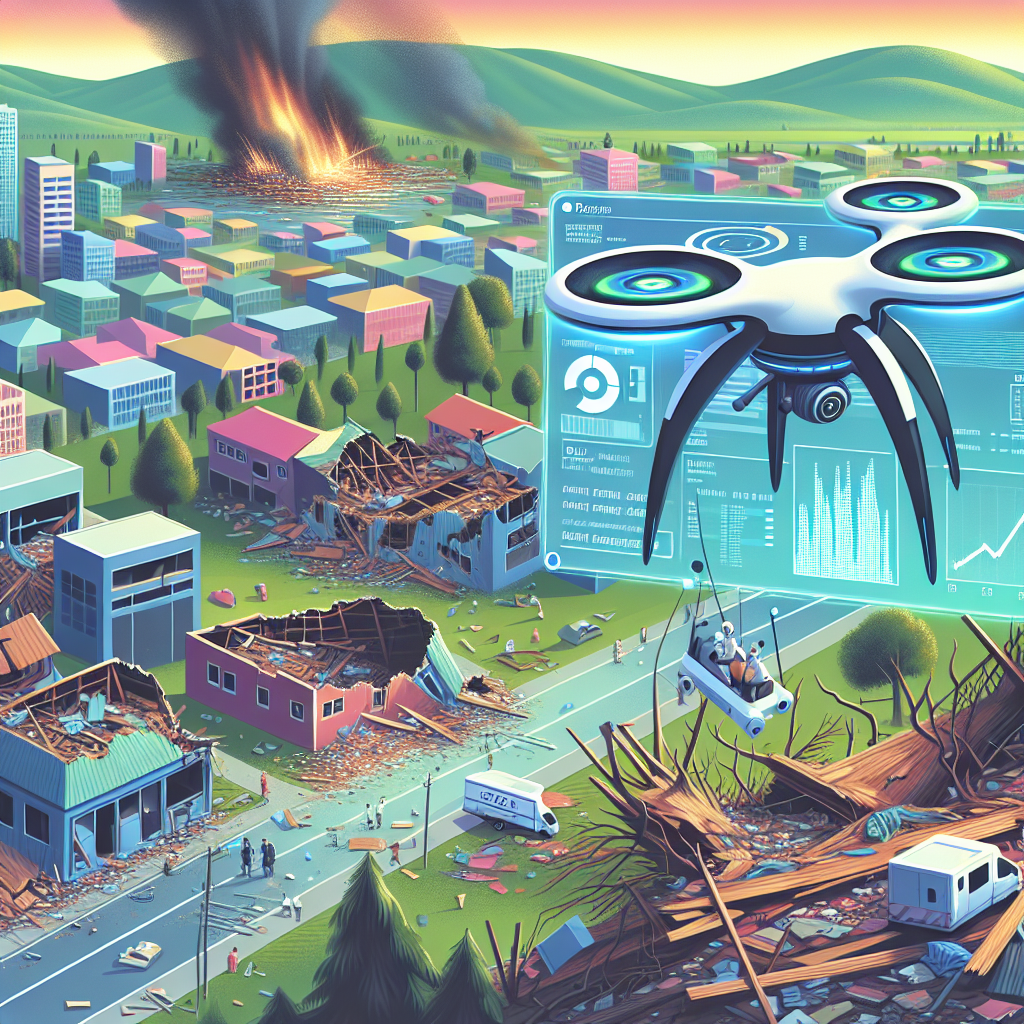In recent years, the impact of natural disasters has become more severe and frequent, resulting in significant loss of life and property. With the increasing frequency and intensity of these disasters, there is a growing need for effective disaster risk reduction strategies. One of the emerging technologies that has the potential to revolutionize disaster risk reduction is Artificial Intelligence (AI).
AI refers to the simulation of human intelligence processes by machines, including learning, reasoning, and problem-solving. AI technologies have the ability to analyze vast amounts of data in real-time, identify patterns, and make predictions, which can be invaluable in disaster risk reduction efforts. AI can help in various stages of disaster management, from early warning systems to post-disaster recovery and reconstruction.
Early Warning Systems
One of the most critical aspects of disaster risk reduction is early warning systems. AI can play a crucial role in improving the accuracy and timeliness of early warning systems for natural disasters such as hurricanes, earthquakes, floods, and wildfires. By analyzing data from various sources, including weather satellites, sensors, and social media, AI can help predict the likelihood and impact of a disaster, allowing authorities to take proactive measures to mitigate its effects.
For example, AI-powered algorithms can analyze historical weather data to predict the path of a hurricane and its potential impact on coastal areas. This information can help authorities in issuing evacuation orders and mobilizing resources to prepare for the disaster. Similarly, AI can analyze seismic data to predict the likelihood of an earthquake and its intensity, enabling authorities to take preventive measures to reduce the risk of casualties and damage.
Response and Recovery
In the aftermath of a disaster, AI can help in coordinating response and recovery efforts. AI-powered drones can be used to assess the extent of damage to infrastructure and identify areas that require immediate attention. These drones can also be equipped with sensors to detect gas leaks, chemical spills, and other hazards, allowing authorities to prioritize their response efforts.
AI can also be used to analyze social media data to identify individuals in need of assistance during a disaster. By analyzing posts and messages on social media platforms, AI algorithms can identify individuals who are trapped or injured and dispatch rescue teams to their location. This real-time information can help authorities in coordinating rescue efforts and saving lives.
Furthermore, AI can be used to optimize the distribution of relief supplies and resources during a disaster. By analyzing data on population density, infrastructure damage, and access routes, AI algorithms can determine the most efficient way to deliver aid to affected areas. This can help in minimizing response times and ensuring that resources reach those in need quickly.
Challenges and Limitations
While AI has the potential to revolutionize disaster risk reduction efforts, there are several challenges and limitations that need to be addressed. One of the main challenges is the availability and quality of data. AI algorithms require vast amounts of data to make accurate predictions, but in many developing countries, data on natural disasters may be limited or outdated. Improving data collection and sharing mechanisms is essential to harness the full potential of AI in disaster risk reduction.
Another challenge is the lack of technical expertise and resources in many countries to implement AI technologies effectively. Training and capacity-building programs are needed to equip local authorities with the knowledge and skills to use AI tools for disaster risk reduction. Additionally, there are concerns about privacy and data security when using AI algorithms to analyze personal information from social media platforms. Safeguards and regulations need to be put in place to protect individuals’ privacy while using AI for disaster response.
FAQs
Q: How can AI improve early warning systems for natural disasters?
A: AI can analyze vast amounts of data from various sources, including weather satellites, sensors, and social media, to predict the likelihood and impact of a disaster. This information can help authorities in issuing timely warnings and taking preventive measures to mitigate the effects of the disaster.
Q: Can AI help in coordinating response and recovery efforts during a disaster?
A: Yes, AI-powered drones can be used to assess the extent of damage to infrastructure, identify individuals in need of assistance, and optimize the distribution of relief supplies. AI algorithms can also analyze social media data to identify individuals who require urgent help during a disaster.
Q: What are the challenges of using AI in disaster risk reduction?
A: Some of the challenges include the availability and quality of data, lack of technical expertise and resources, and concerns about privacy and data security. Improving data collection mechanisms, providing training programs, and implementing safeguards and regulations are essential to address these challenges.
In conclusion, AI has the potential to revolutionize disaster risk reduction efforts by improving early warning systems, coordinating response and recovery efforts, and optimizing the distribution of resources during a disaster. While there are challenges and limitations that need to be addressed, the benefits of using AI in disaster risk reduction far outweigh the risks. By harnessing the power of AI, we can enhance our ability to prepare for, respond to, and recover from natural disasters, ultimately saving lives and reducing the impact of these catastrophic events.

